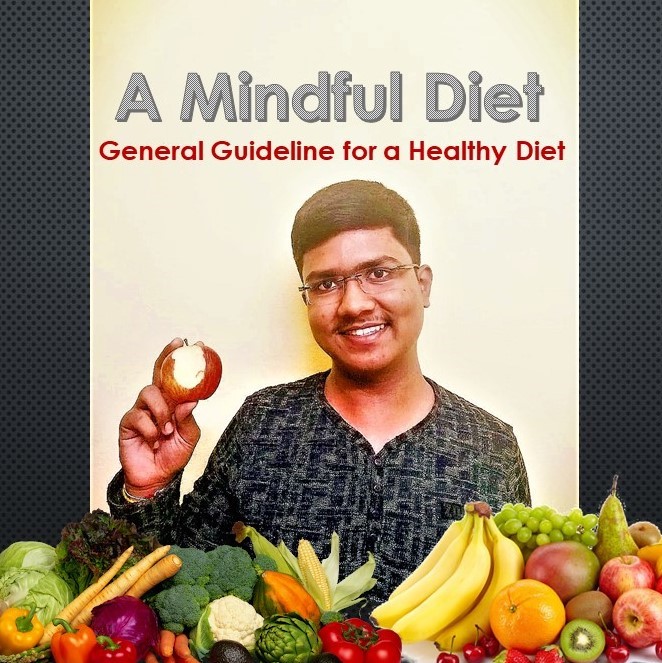
Click here to read this article in Marathi: समतोल आहार
Food is our basic need. Life is no longer without food; no growth is possible without food. In some parts of the world, people do not have enough food to eat; while in other parts, people are consuming more calories than needed and becoming obese. Obese people may consume a large amount of food, but if that food is not a good balance of nutrients then they can be malnourished. So, healthy eating habits are very crucial for our physical health as well as mental health.
People usually get confused about what a proper diet is. We commonly hear diet when it comes to eating salads and losing weight. What diet actually means is all the food and liquids we consume. There can be vegetarian diets that consume vegetables and not meats, pescatarian diets which consume fish, and so on.
Nutrition involves more than simply eating food. Nutrition is eating the right food so we get the proper nutrients. It refers to the quality of food.
Healthy eating is about getting the correct amount of nutrients- complex carbohydrates, proteins, healthy fats, vitamins and minerals. We need these foods in a balanced way. We eat food to live longer, prevent diseases and maintain healthy weight.
 In the past, we used “food pyramid” to help healthy eating easier. It is replaced with “MyPlate”1. It shows the five food groups (fruits, vegetables, proteins, grains, and dairy). It is designed to be easy to understand when you think about what types of food to include in each meal that you eat. The entire point of the MyPlate picture is for people to get a general idea of how much of your plate should have fruits, veggies, proteins. etc.
In the past, we used “food pyramid” to help healthy eating easier. It is replaced with “MyPlate”1. It shows the five food groups (fruits, vegetables, proteins, grains, and dairy). It is designed to be easy to understand when you think about what types of food to include in each meal that you eat. The entire point of the MyPlate picture is for people to get a general idea of how much of your plate should have fruits, veggies, proteins. etc.

So for example, You see fruits and vegetables taking up half of the plate. That is about how much fruits and veggies you should eat per meal.
Based on AHA (American Heart Association) guidelines, AAP4 (American Academy of Pediatrics) recommends:

Eat from all food groups2 and use plant foods as the foundation of meals!!
Fruits: Berries, bananas, citrus, mango, kiwi, apples, melons. For juices, choose juices without added sugar or corn syrup.
Veggies: Leafy greens like kale, arugula, spinach and collard greens; peppers; carrots; sweet potatoes; mushroom; squash.

Grains: Brown rice, wild rice, whole-grain bread, quinoa, amaranth, millet. Increase whole grains and limit refined grain products. Adding millets to your diet will be a great choice as they have high nutritional value. There are many different types of millets. Some of the more common varieties include: Pearl millet, Foxtail millet, Finger millet, Barnyard millet, and Sorghum. Click here to read more about millets: Millets: A Nutritious Ancient Grain!
Legumes: Beans, lentils, dried peas, hummus
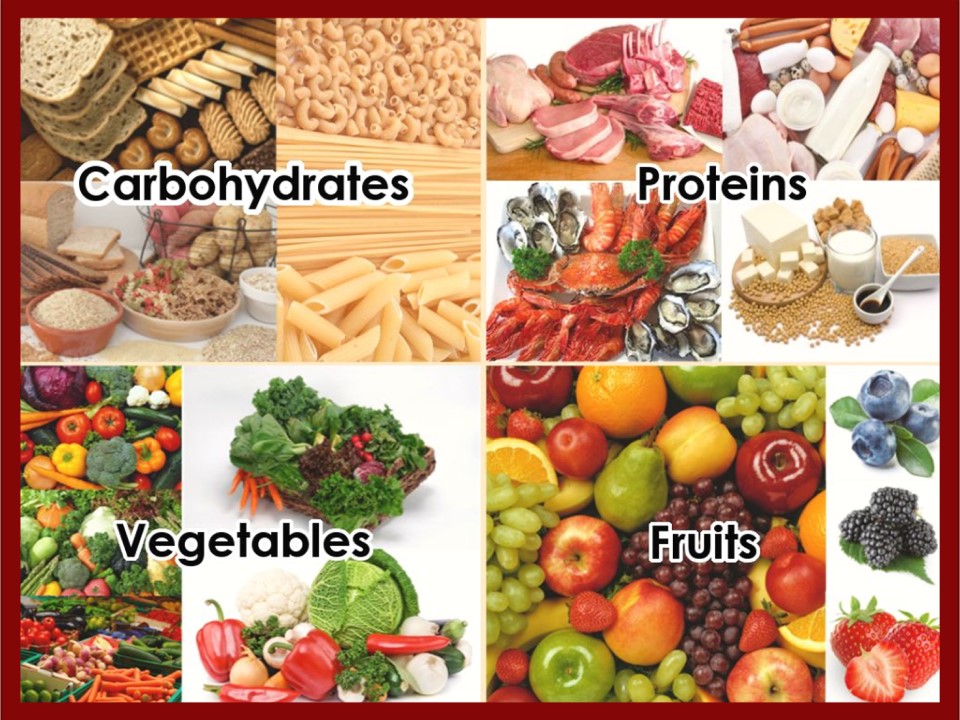
Protein: Get a good mix of proteins, both animal (unless vegetarian or vegan) and plant. Eating a variety of proteins will ensure that you get all of the amino acids (building blocks of protein) you need.
Nuts and seeds: Almonds, pistachios, cashews, walnuts, chia seeds, flaxseeds, hemp, sunflower, pumpkin seeds

Fats: Enjoy beneficial fats. Get the majority of your fats from plants and fish and minimize saturated animal fats. Plant foods provide a variety of vitamins and minerals essential for health. They also provide fiber.
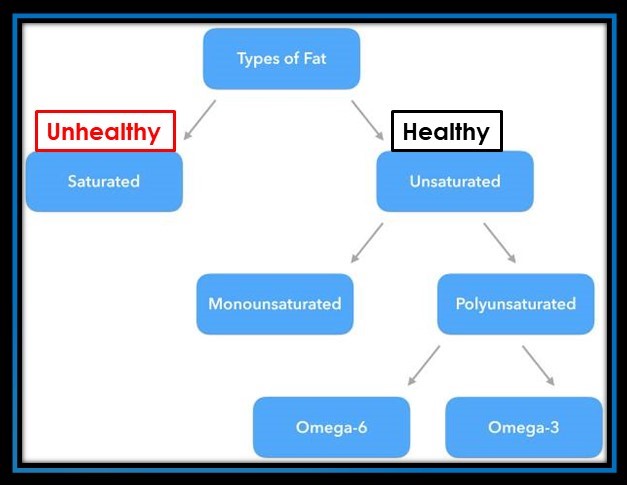
Fats can be saturated and unsaturated. Unsaturated fats are healthy. They can be
Monounsaturated (olive oil, avocados, nuts (almonds or pecans), and seeds (pumpkin or sesame) or Polyunsaturated – omega-3 fatty acids found in fish such as salmon or sardines. The plant sources for omega-3 fatty acids are walnuts, flaxseeds, chia seeds, canola oil, soybeans and soybean oil. They have vital role in development and maintenance of normal brain function throughout life. They facilitate the communication between brain cells. If pregnant woman consumes good amount of omega 3 fatty acids, the child will have high IQ (intelligence quotient). It improves brain aging, memory, depression, and ADHD (attention deficit hyperactivity disorder).
Unhealthy fats are found in fried foods, baked goods, processed foods made with vegetable oils and packaged foods such as cookies, crackers or snacks.
Hence, our diet should have a good combination of proteins, carbohydrates, fats, vitamins and minerals.
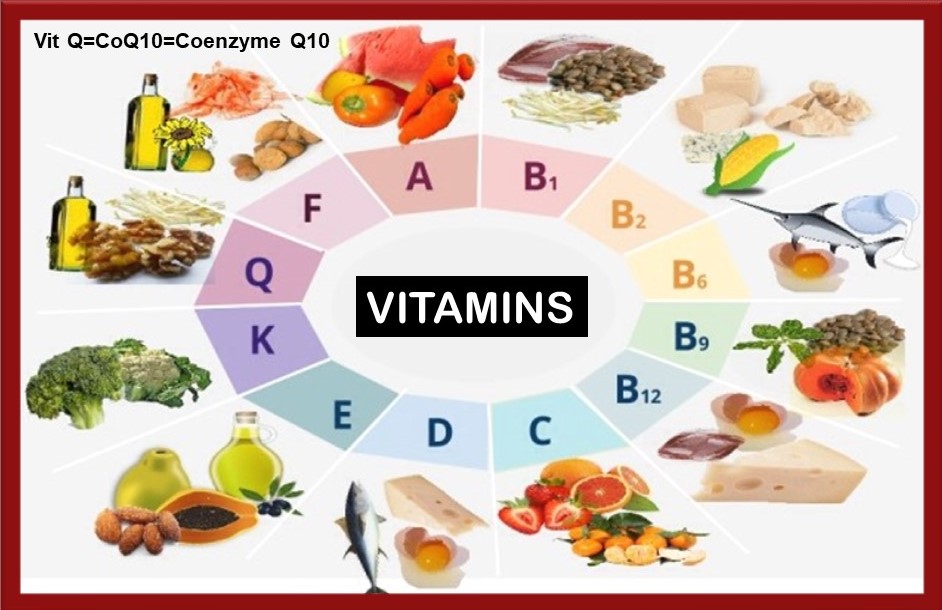


Eating3 a balanced breakfast with protein is a great way to start your day. Hence, do not skip your breakfast! Protein can help us stay fuller longer. Try one of these for a healthy, on-the-go breakfast:
- Egg sandwich on whole-wheat bread.
- Greek yogurt.
- Peanut butter on whole-grain toast.
- Hard boiled eggs, toast, and an apple.
- In Indian food: idli, dosa, poha, upma, sprouted beans, healthy parathas

Limit sugar: Natural sugar from fruits, vegetables, grains, and dairy products are good for body. But artificial sugars or added sugars add unnecessary calories to your diet. It can lead to obesity, type 2 diabetes and mood disorders. Cutting out sodas, candies and juices is an easy way to reduce sugar and weight.

LOOK AT HOW MUCH SUGAR IS IN ONE CAN OF SODA! You don’t have to quit soda entirely, but even reducing it by a few cans can have huge impact on your mood, weight, and it greatly decreases your chances for obesity/diabetes/heart problems.
- Food preferences develop early in life. Expose your child to different kinds of food early on, and continue as they grow older.
- When you use food as a reward or to show affection, your child could start using food to cope with his emotions. Instead, give them hugs, praise, attention, or time together.
- Cooking at home can have a huge impact on your child’s health. Restaurant and takeout meals have more added sugar and unhealthy fats.
- Involve kids in shopping for groceries and preparing meals. Teach them how to pick the right fruits and vegetables.
- Make healthy snacks available (picture below); so kids avoid unhealthy snacks like soda, chips and cookies.
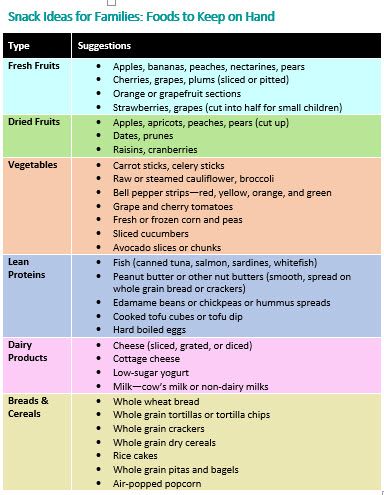
Make Eating a Positive Experience!
- Use healthy cooking methods such as steaming, broiling, grilling and roasting. Frying adds extra fat to food.
- Avoid packaged or processed food which contain added salt, sugar, fats and preservatives.
- Acknowledge and honor your hunger. Allow yourself to feel hunger. It is very satisfying to eat after really experiencing hunger.
- Turn off TV/screen. It is hard to engage and focus on your food with the distractions like TV, smart phones, tablets etc.
- Try mindful eating. Think about the food before, during and after your meal. Think about what kind of texture, color, flavor and pleasure it gives.
- Eat with others. It gives us the opportunity to share the joy of company and food, builds emotional support, and gives us an opportunity to connect with family and friends.
- Building strong emotional ties with family and friends decreases the chances of eating food to cope with negative emotions. We can get emotional support from family and friends instead.
- Take your time to finish your meal. It seems very simple but is surprisingly difficult. Give yourself time to savor your food and taste each bite the whole time you are chewing.
- Stop before you feel full. What we think is a typical portion is more than we need.
- Have fun and enjoy the process of eating.
- Do not forget to drink plenty of water..
- Remember, there is no bad fruit, vegetable, nut, seed, legume, or whole grain. They are all good!
Diets higher in plant foods and lower in animal foods were associated with a lower risk of cardiovascular morbidity and mortality in a general population5.
Finally……

References:
- http://www.center4research.org/myplate-new-alternative-food-pyramid/
- https://www.takingcharge.csh.umn.edu/consider-food-medicine
- https://familydoctor.org/nutrition-tips-for-kids/
- https://pediatrics.aappublications.org/content/117/2/544
- https://www.ahajournals.org/doi/10.1161/JAHA.119.012865

Good article every parent must read
Thank you.
V.nice.intruduction for healthy &low calories diet…
Thank you.
Great info! Thanks ..enjoyed reading article!
Thank you 🙂